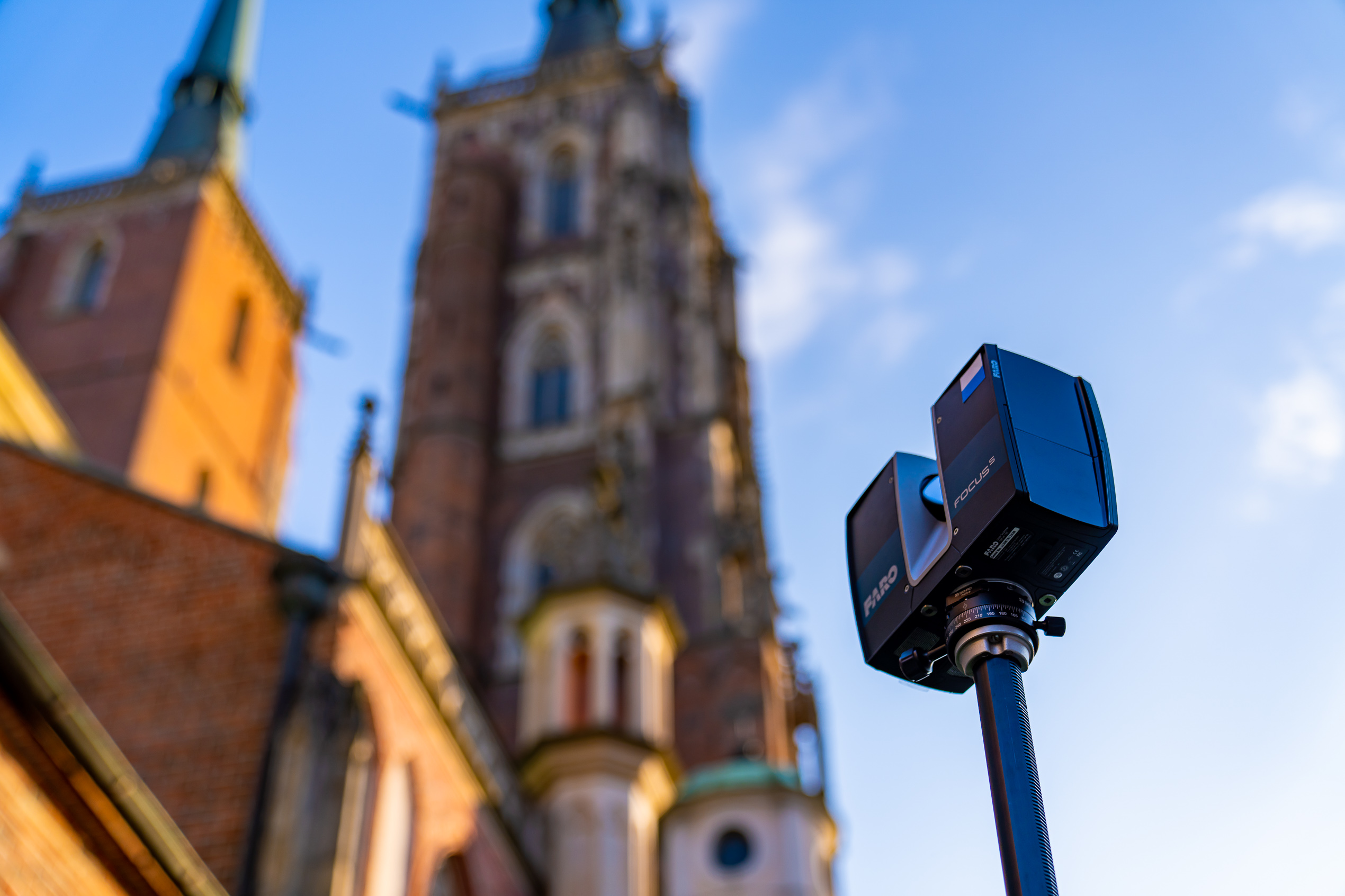We are scanning the Wroclaw Cathedral
September 3, 2022

After conducting several rounds of digitization work inside the Cathedral of Saint John the Baptist in Wroclaw, which focused on sculpture, painting (polychrome, easel painting and stained glass) and craftsmanship, it was time for laser scanning of the entire interior of the church.
3D laser scanning, carried out for digitization and inventory purposes, allowed us to acquire detailed information about the shapes, colors and sizes of the cathedral.
For this purpose, we used the latest medium-range laser scanner (about 130-150 m), providing high accuracy (scanning range error of max 1-2 mm), optimal point cloud density with a measurement speed of up to 1 million points per second, and built-in sensors: GPS, compass, altitude sensor, two-axis compensator.
In order to obtain a faithful unadulterated texture of the rather murky interior of the church, we used a scanner having a built-in digital camera with HDR function, capable of generating from a single workstation a panorama with a resolution of min. 160 Mpx, which made it possible to eliminate overexposure in the window zone and/or underexposure in the zone of the nave, side aisles, organ choir, with special attention paid to, devoid of natural light, the ambit, i.e. the chancel bypass. In summary, the HDR function improved the quality of images captured in very bright or dark lighting conditions, providing a high level of detail of the church interior.
The entire process of digitizing the church’s architecture involved 3D laser scanning, processing the data obtained from the scanning on dedicated workstations, including registering the scans, combining them, applying color, creating and cleaning the final point cloud from noise, generating orthophotos and color panoramic images, creating camera paths in the final point cloud, generating HD video frames, and finally exporting the final point cloud to e57 format.